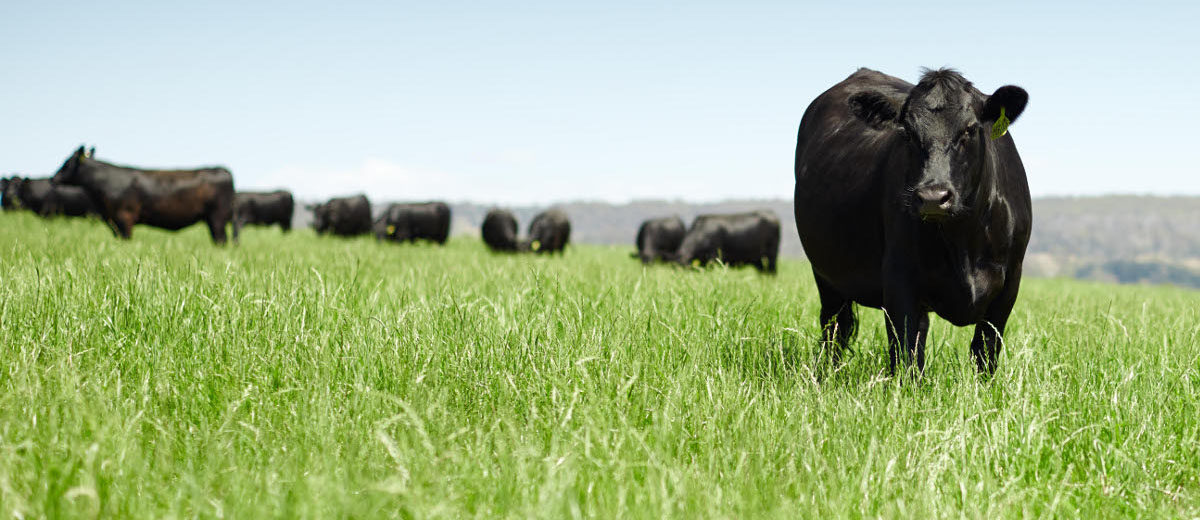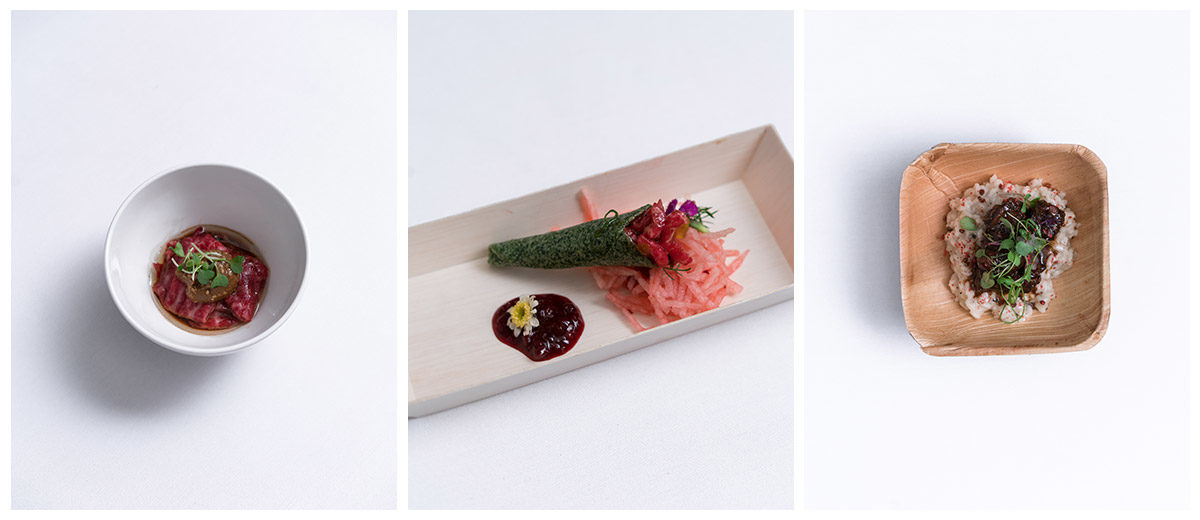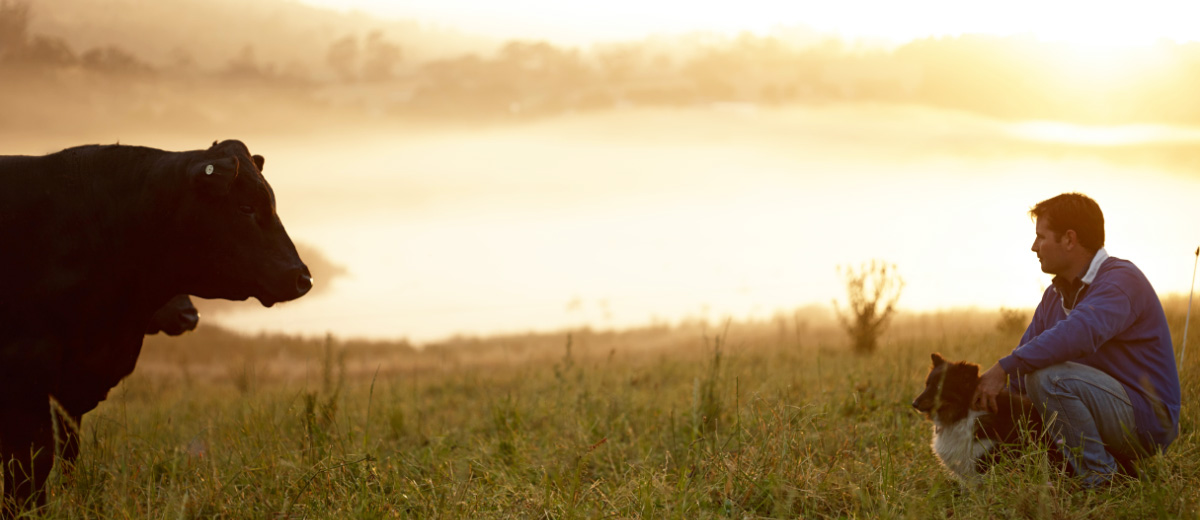On a recent February night, not far from the famed Las Vegas “Sunset Strip”, a group of top chefs gathered excitedly to get their hands on one of the food world’s hottest products: Australian Wagyu.
The import from down under has gained culinary attention with an increase on menus over the last four years. When served, it’s the centerpiece of a truly arresting culinary experience due to its tenderness, melt-in-your-mouth texture and depth of flavor. Some refer to it as the “Caviar of beef.” But to understand the buzz that’s been building around this product, you have to go back to the source.

Oh, Home on the Range
“Wagyu calves are born on Australian farms,” says Sabina Kindler, of Darling Downs Wagyu. “[They’re] raised first by their mothers for around six months, before grazing free-range on natural pastures for most of their lives. They will then transition to a grain-based feed ration that includes things like hay, silage and trace minerals. This grain-based diet produces the unique marbling or intramuscular fat within the muscle, that gives Wagyu beef its unique flavour and texture.”
For decades, Wagyu could only be found in Japan. The word Wagyu itself translates from Japanese simply as “Japanese Cow”. Despite the acclaim of the product in certain circles, there still exist a number of misconceptions. Many people don’t realize that the well-known “Kobe Beef” merely refers to Wagyu grown in the Kobe region of Japan.
The first Wagyu cow wasn’t brought to Australia until 1990. Yet the country now already has the world’s second-largest breed association. And it’s not just the genetics that have allowed Wagyu herds to flourish in Australia. It’s the land itself.
“Australia is free of all major endemic livestock diseases,” Kindler explains. “We have national traceability systems that work in conjunction with national standards for animal health, welfare and biosecurity to ensure best practice animal husbandry and low stress stock handling.
“Australian Wagyu is raised on grass and finished on a grain-based diet to achieve rich marbling. Combined with our fresh air, clean water and wide open spaces, our cattle are happy and healthy, and this is reflected in the quality of the beef our Wagyu produce.”

The Aussie Wagyu Standards
When you’re trying to create the most delicious beef on the planet, you can’t take anything for granted.
All sectors of Australian Wagyu go through various systems to assure high quality standards and product integrity, from the ranch through to transport, sale yards and processing plants. These standards are recorded through a traceability system that requires each head of cattle to be tagged with a National Livestock Identification System electronic tag. This tag enables quick and easy access to individual animal transactions and records.
One of Wagyu beef’s distinct characteristics is its intense marbling. According David Clark, of Wagyu exporter Kerwee Wagyu, “Carcasses are graded by independent chiller assessors on factors including marbling, meat colour and fat colour.” Every carcass is assigned a Marble Score, based on these factors. The scale goes from 1-9, but Australian Wagyu is produced with the goal of hitting 5+, every time.
Lower-scoring cattle will happily produce some of the most mouth-watering steaks you’ve ever laid eyes upon, but as you move up in the ranks, toward marble score 9, you get something else entirely: a flavor so rich and a texture so buttery that the meat is best enjoyed in small plates.
With such high-grade beef, “cooking” can actually be unnecessary. It absolutely shines when presented as a tartare, tataki, or even as sashimi. The rich, marbled fat just melts on the palate, no matter how it’s prepared.

Sansho / Charred Negi by Chef Gary LaMorte | CENTER:
Nori Tuile Cornet with Aussie Wagyu Tartare / Kalbi Sauce / Asian Pear Kimchi by Chef Roy Villacrusis | RIGHT: Risotto alle Secole (Aussie Wagyu Intercostals) “Cacio e pepe” by Chef Luke Palladino
What’s Next For Australian Wagyu?
As word has gotten out that the world’s most high-end beef bloodline can be imported from more than one country, the Australian wagyu herds have grown in popularity. More than a few chefs we’ve spoken to have let us know that they’ve come to regard Aussie wagyu as the best in the world.
When asked about the future, Clark shared his bright outlook “Demand currently exceeds supply.”
At our gathering in Vegas, our guests – a mix of chefs, restaurateurs, and other weathered industry vets – were prepared for a wonderful evening of good company and tasty dishes. The wagyu blew even these pros away.
Chef Roy Villacrusis, an award-winning sushi chef, was one of the three chefs cooking. So what did he think?
“I was almost teary-eyed just using it.”
To learn more about Australian Wagyu Beef, or to join a private Facebook group of chefs interested in Aussie wagyu beef, contact the True Aussie team at MLAteam@summitmg.com.



